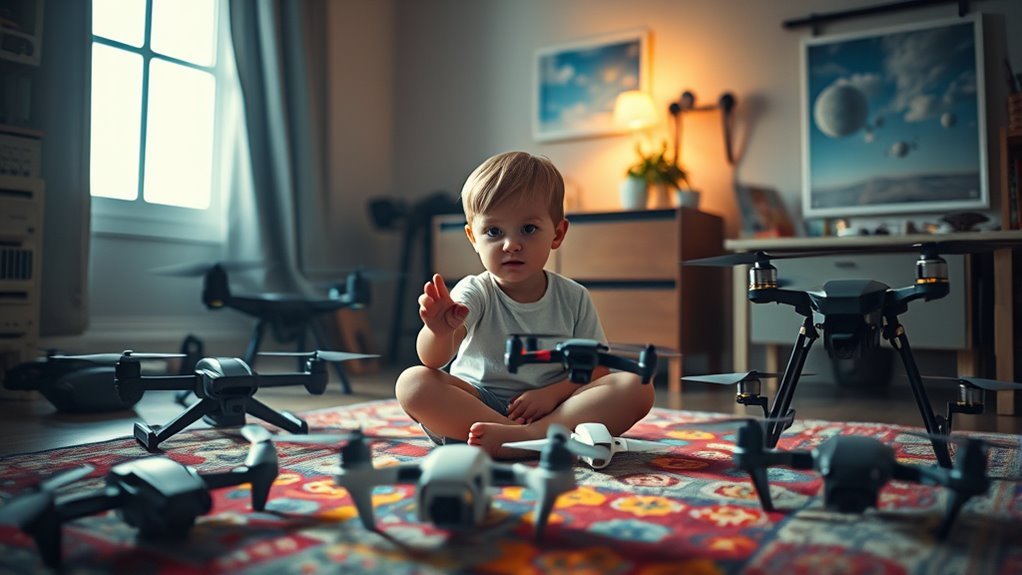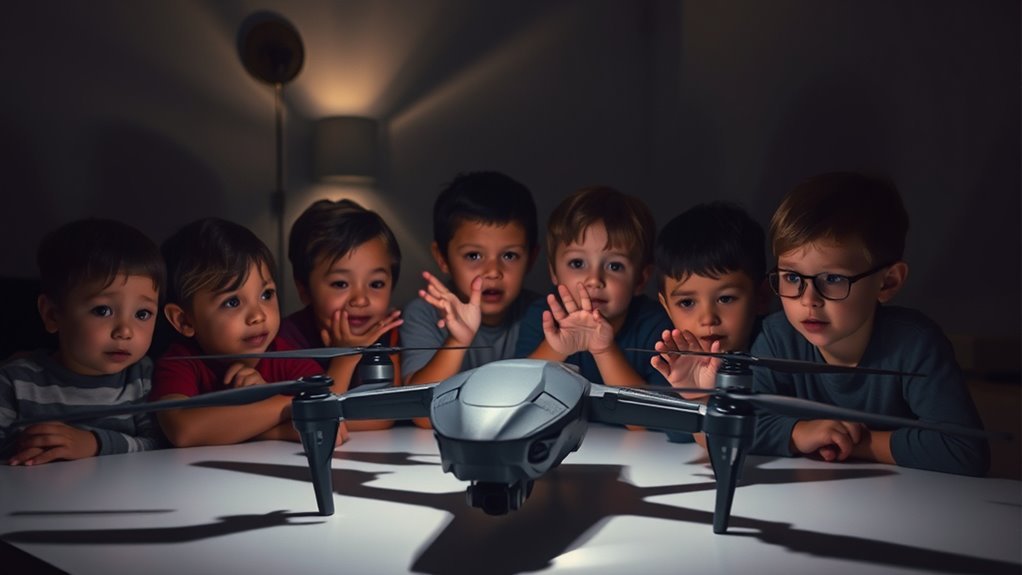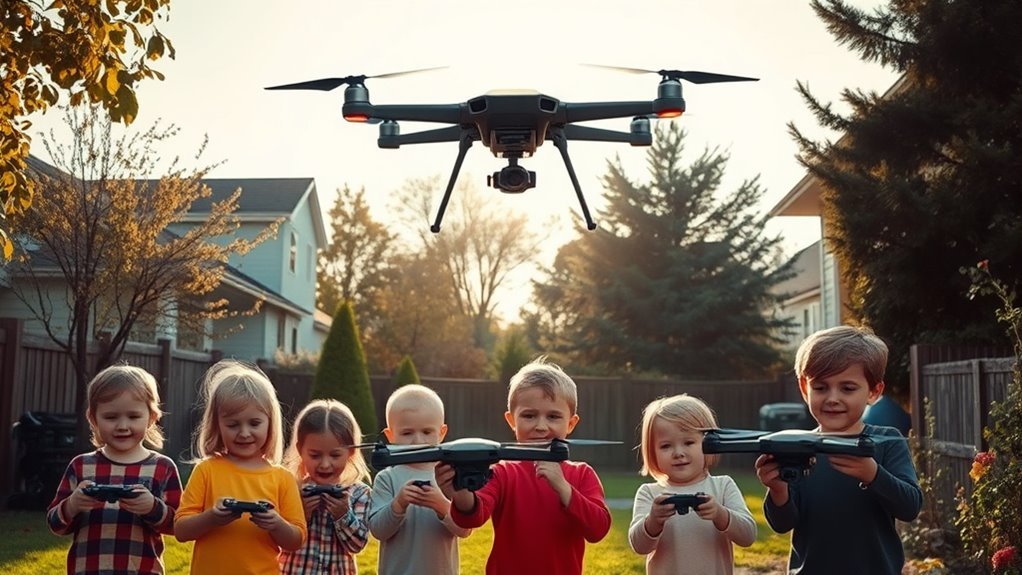As a parent, it’s important to understand how murder drones in media can affect your child’s perception of technology and violence. It can create fear or confusion, leading to anxiety about their environment. Open discussions in a safe space help children navigate their emotions and build critical thinking skills. By guiding them through the themes in media, you can promote a healthier understanding of these concepts. Explore further insights on how you can support your child in this journey.
Understanding the Concept of Murder Drones

Murder drones might sound like something out of a sci-fi movie, but they’re a concept that’s gaining attention in various media. Understanding these drones hinges on recognizing the advancements in drone technology and the ethical implications tied to their use. As a parent, you might feel a mix of curiosity and concern about how these discussions impact your child’s perception of technology and freedom. It’s essential to foster open conversations about the potential benefits and risks associated with such powerful tools. While drone technology can enhance safety and efficiency, it also raises questions about privacy, autonomy, and morality. By guiding your child through these complexities, you can help them develop a balanced perspective on technology and its role in our society.
The Role of Media in Shaping Perceptions

While it’s easy to overlook the influence of media, it plays a crucial role in shaping how your child perceives the world, especially when it comes to complex topics like advanced technology. From movies to video games, the portrayal of murder drones can skew your child’s understanding. Media influence can create fear or fascination, molding their perceptions in ways you might not expect. It’s essential to engage with your child about what they see and hear, fostering open discussions. Encourage critical thinking by asking them how they feel about these portrayals and what they think the reality is. By doing this, you empower them to navigate media narratives, ensuring they develop a balanced view of advanced technology and its implications.
Potential Psychological Effects on Children

As children are exposed to the concept of murder drones through various forms of media, they may experience a range of psychological effects that can shape their understanding of safety and technology. You might notice a heightened fear response in your child, leading to anxiety about their environment and the world around them. It’s natural for them to grapple with the moral implications of such violent concepts, questioning right and wrong. This can create confusion and distress, impacting their emotional well-being. Understanding these potential effects is essential. By acknowledging their feelings and fostering open discussions, you can help them navigate these complex emotions, empowering them to think critically about what they see and hear, ultimately fostering a healthier relationship with technology and media.
Strategies for Parents to Discuss Violent Content
When managing conversations about violent content, it’s essential to create a safe space for your child to express their thoughts and feelings. Start by fostering open dialogue—encourage them to share their reactions without fear of judgment. Listen actively, validating their emotions while guiding them through their concerns. It’s also crucial to establish healthy boundaries around what content is appropriate for their age. Discuss why certain themes might be troubling and help them understand the difference between reality and fiction. You can suggest alternative media that promotes positive messages. By being supportive and approachable, you empower your child to navigate their feelings about violence, helping them build resilience and critical thinking as they engage with the world around them.
Encouraging Critical Thinking and Media Literacy
Encouraging critical thinking and media literacy in your child is essential, especially in a world saturated with varied content. Help them develop critical analysis skills by discussing the media they consume, including shows, games, or news about murder drones. Ask open-ended questions that prompt them to think about the ethical implications of violence in media. Encourage them to reflect on different perspectives and the potential impact of such content on society. By fostering these discussions, you’re not only enhancing their understanding but also empowering them to make informed decisions. Remember, it’s about guiding them to think independently, question narratives, and discern fact from fiction. This foundation will serve them well as they navigate an increasingly complex media landscape.
Frequently Asked Questions
Are Murder Drones Real or Fictional Creations?
Murder drones, while intriguing in fictional entertainment, aren’t real technology. It’s important to understand the distinction; such concepts often serve as commentary on society rather than actual threats. Stay informed and encourage critical thinking in discussions.
What Age Is Appropriate for Children to Watch Related Content?
When considering age recommendations for children watching related content, you’ll want to assess content suitability carefully. It’s crucial to balance their curiosity with emotional readiness, ensuring they can process what they see in a healthy way.
How Can Murder Drones Impact Children’s Empathy Levels?
How do you think exposure to violent content affects empathy development? It can lead to emotional consequences, desensitizing children and diminishing their ability to connect with others, so it’s essential to monitor what they consume.
What Are Some Examples of Murder Drones in Popular Culture?
You might notice murder drones in films like “Terminator” or “Star Wars.” These portrayals reflect drone technology’s moral implications, sparking discussions on ethics, freedom, and the impact on society’s values and children’s understanding of violence.
How Do Different Cultures Perceive the Concept of Murder Drones?
Different cultures see murder drones through various lenses. Some view them as symbols of oppression, while others perceive them as necessary evils. These cultural interpretations shape societal implications, reminding us of our shared responsibility for peace and understanding.

